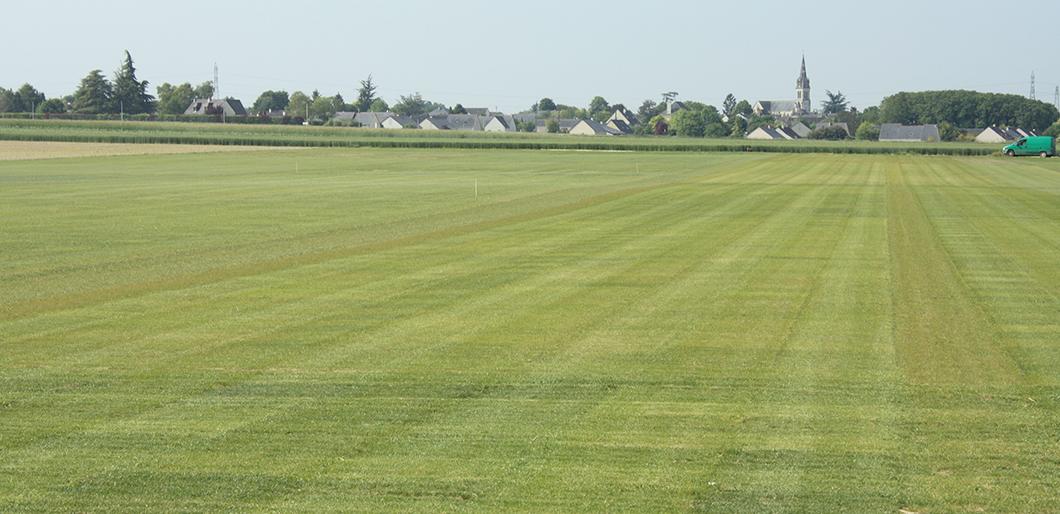GREENSLEEVES
Excellent "mérite visuel" comme disent les anglais

Red fescue is found in many natural green areas on nearly all types of soils and under widely varying moisture conditions.
Red fescue is relatively slow growing in the sowing year and has very fine needle like leaves and a high shoot density. It thrives under a wide range of conditions but is notable for its tolerance to dry, rather poor soil. It is very resistant to frost and drought and it tolerates surface water during the winter to some extent. Shade tolerance is better than for most other species. There are three types of red fescue for amenity purposes:
1. Slender creeping red fescue type - rubra trichophylla
2. Chewings fescue type - rubra commutata
3. Strong creeping red fescue type - rubra rubra
Festuca rubra commutata has no rhizomes (bunch grass) but the highest density of shoots of the three types. When using commutata in mixtures, it is often necessary to add one of the other types of fescue with rhizomes (or Poa pratensis) in order to facilitate the infill and repair of gaps in the sward. In cold areas, commutata is an important component as it has higher winter hardiness than other fescues. As shoot density is very high, commutata is an integral component of mixtures that require close mowing, especially for golf greens.